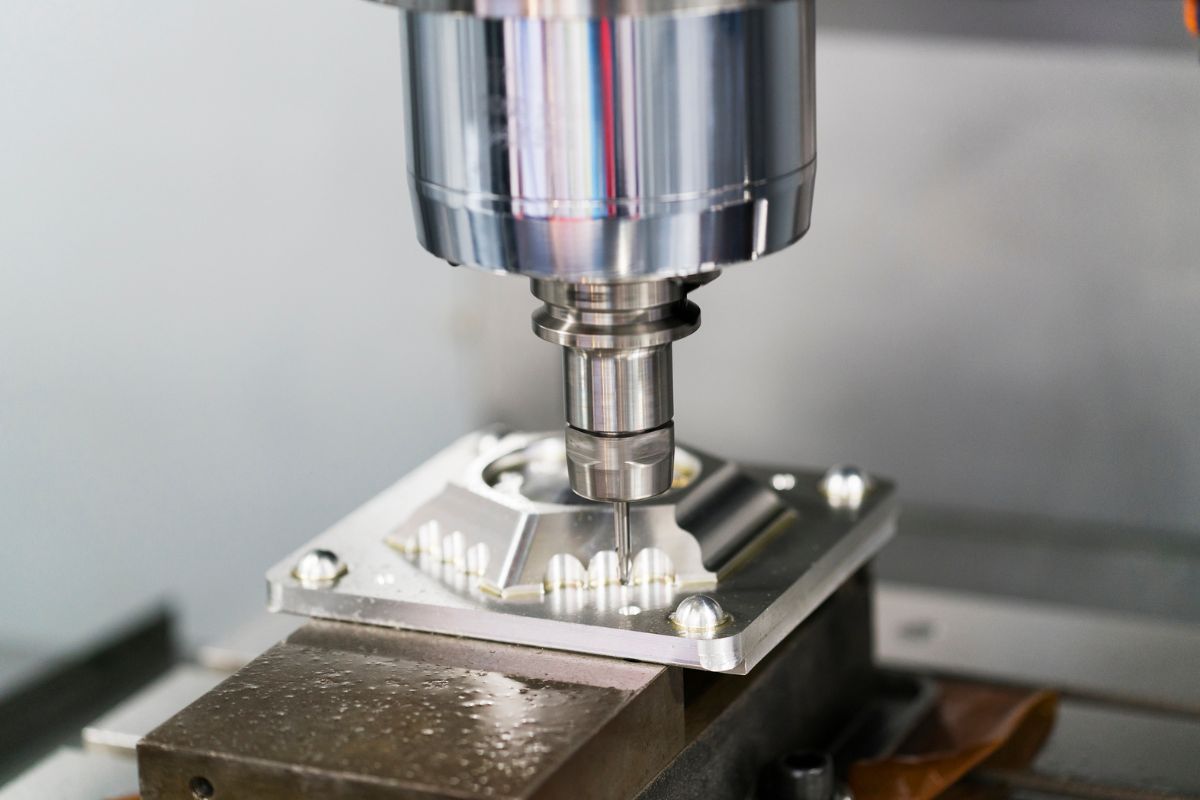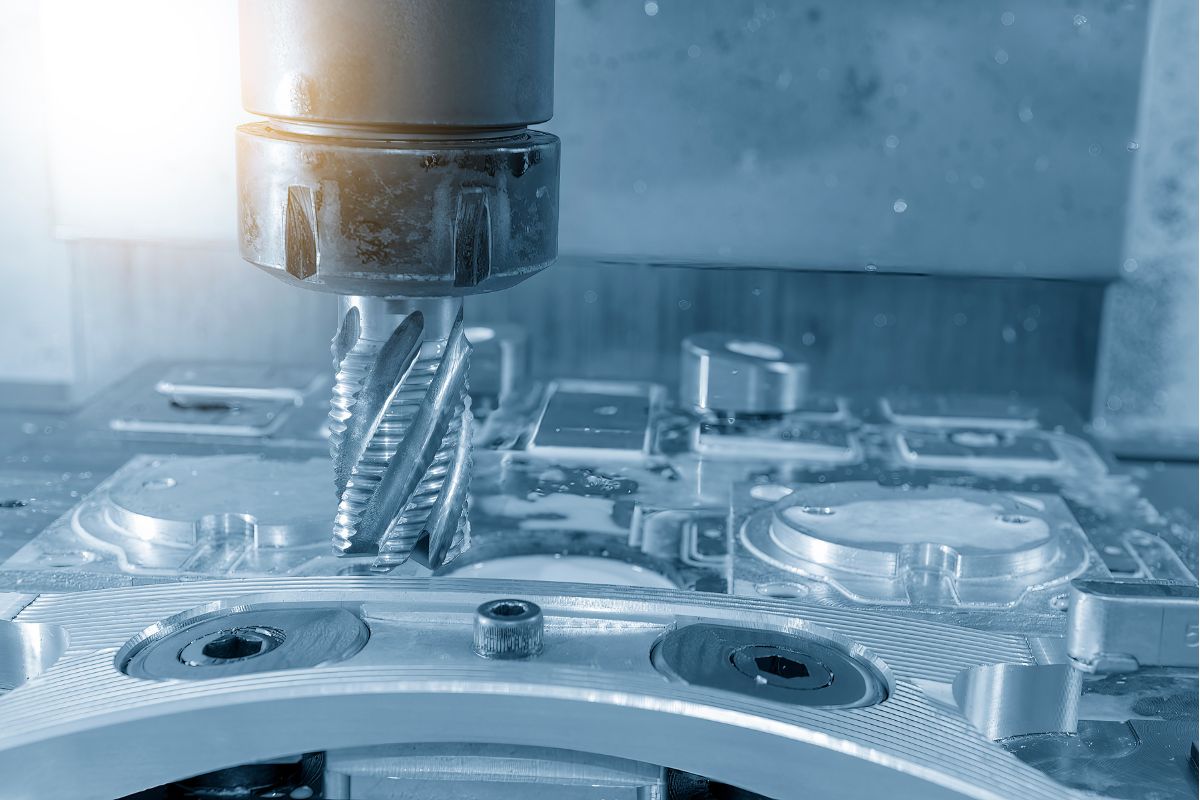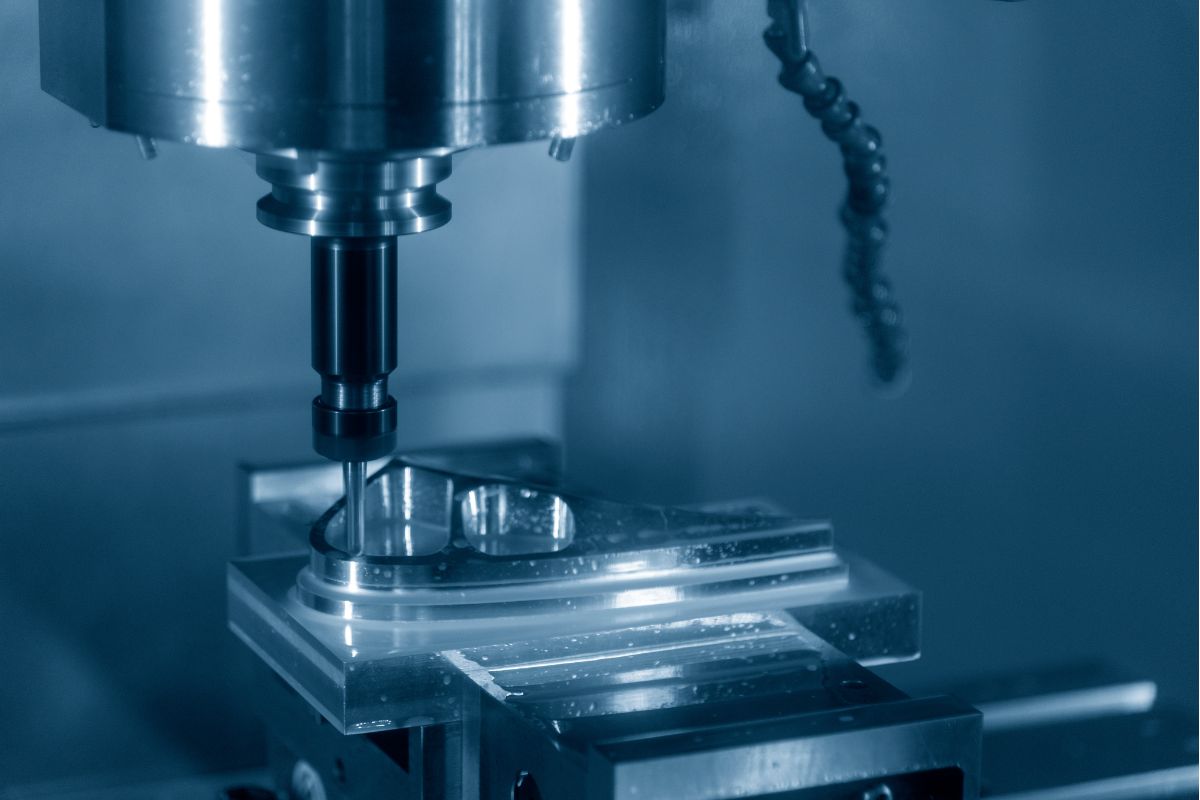For fabricators, metal machining and casting operations are sometimes shown as binary alternatives. However, there are many circumstances in which using both casting and machining is the most efficient in terms of production, as the recent essay on casting vs. machining made clear. The advantages of machining castings are covered in this article, and the application of these production techniques to your next project is discussed.
What Is Casting CNC Machining?
Machined castings are components that is initially manufactured through casting and subsequently refined through CNC machining. Die casting, investment casting, or sand casting may be implemented to generate the initial casting. Every casting process has drawbacks, such as poor surface finish or restricted design. CNC machining solves the above problems by improving the quality of products and adding more complex designs.
Some possible machining operations include Computer Numerical Control Milling, Turning, Drilling, Sawing, and other non-conventional castings machined operations to get a premium surface.

Machining of Casting Parts Advantages.
There are several benefits to machine-castable parts. Some of the commonest include;
1. Modifying As-Cast Parts
Those casting machined parts produced directly from their casting molds are known as “as-cast” These parts contain extra material from the gating system, parting lines, and other casting features. To increase the quality, the fabricators have to get rid of this unwanted material, which can be done by a simple hacksaw for roughing or by using CNC for accuracy. For example, in the case of aluminum casting machining, aluminum CNC machining helps achieve high dimensions and accuracy.
Casting flaws can be easily camouflaged through CNC machining, and the quality of the final product can be significantly improved. Also, it allows the development of features that cannot be created using casting only, such as the curved fins of a turbine. Some of the design issues can be solved by techniques like investment casting, but in most cases, the holes, grooves, and threads produced by machining are of better quality.
2. Improving Finished Quality
However, if casting and machining do not need extra features and the material that has to be removed is easily removable, it is still important to use precision CNC machining to obtain high-quality parts. Some processes, such as die casting, can deliver relatively smooth surfaces that only require slight machining. However, the parts produced through sand casting or investment casting require a significant amount of machining to achieve a flat surface.
CNC machining also improves the quality of the parts that have tight tolerances. Casting can be economical when the production is significant, and CNC machining guarantees that every part is correctly shaped. Machining allowances have to be taken into consideration during the casting stage to have a smooth integration.
It is wise to incorporate sheet metal fabrication services into your production line. The main benefit is the capacity to rapidly and precisely create lightweight parts from numerous materials employing various techniques. Knowledge of these techniques and their specific use is vital in attaining the best outcomes and shortening production time.
How To Machine Casting Parts?
During machining, useless material is removed from casting to make it more accurate in size. This process is beneficial in removing excess material on cast parts after casting and before finishing. Machining is helpful because it is almost impossible to get tiny variations in a complex casting, and thus, the final product has to be machined to the required specifications. It is usually done after the heat treatment but before the final surface treatment, like painting, anodizing, or plating.
As for the current world, the application of technology in machining castings has adopted computer numerical control (CNC). Machining can be classified into many subcategories, which include the following:
Drilling
Drilling is the creation of holes in the cast parts with the help of a drill bit. Lathes and cutting machines can also be used, but drill presses are the main tools used in this process. This process is crucial in the casting process since it assists in the making of holes in the casting.
Milling
A cutter, a fixture, an object, and a milling machine are all things that are used for milling. The piece of work is clamped down during this cutting process, and the milling machine’s cutter takes off the extra material. It can be said that it is one of the most frequently applied methods in the subsequent adjustment of the shape and size of the cast parts.
Turning
In turning, the workpiece rotates on its axis while the cutting tool is stationary or does not move. The most critical equipment employed in this process is the lathe machine. Turning is appropriate for generating the internal and external profiles of cast parts and is very precise.
Other Machining Processes
In addition to drilling, milling, and turning, several other machining processes are used for refining cast parts: Besides drilling, milling, and turning, several other machining processes are used in the finishing of cast parts:
Boring:
It enlarges and increases the accuracy of a part’s pre-drilled holes. It is useful in attaining the correct dimensional and positional tolerances for parts that require high precision and polished surface textures.
Broaching:
Broaching is a process of cutting shapes and designs on cast parts with the help of a cutting tool with teeth. The broach has progressive teeth that shave the material and can make internal and external shapes. Therefore, it is ideal for keyways, splines, and other shapes.

Grinding:
Grinding employs an abrasive wheel that rotates and brings the part’s surface to the required actual position. This process is helpful in offering high surface quality and near tolerance. The cutting points of the grinding wheel abrade the surface, shave off the unevenness, and provide a polished surface.
All these machining methods are important in ensuring that cast parts are of the right quality and size for use or other processes.
Benefits of Machining After Casting
Machined casting parts offer numerous advantages, such as Machined casting parts, therefore, have the following benefits:
Enhancing Precision
The die-casting and sand-casting procedures are not enough to produce very accurate parts. It can be concluded that even if the casting process is tightly regulated, there will always be some material that will stick to the casting. Machining facilitates the removal of this surplus and enhances the precision of the components.
Making Complex Parts
Some designs are too intricate for molds. Machining makes these shapes possible. For instance, drilling or boring is the only means to create complex holes in cast pieces.
Reducing Costs
CNC machining is the process of manufacturing goods with the help of computers and computerized tools. A CNC machine can be used to machine parts without the need of hand operations once the fitting computer instructions are programmed. This efficiency reduces the time spent in production and ensures that all the products are standard, thus reducing production costs. Modern CNC machining, therefore, helps in reducing the general costs.
Advantages of Machined Casting Over Only Casting or Machining
Casting methods are very effective since producing many parts within a short time period and at a relatively cheap cost is possible. However, it is not sufficient to cast alone to achieve the right level of accuracy and finish on the product. Received castings may have excess metal and a thin skin of metal known as a flash along the parting line that may need sawing, trimming, or machining.
On the other hand, CNC machining provides very accurate parts, but the rate at which they are produced is very slow and expensive, making it unsuitable for mass production. Machined casting is a combination of both methods, with the benefits of each process. It uses the casting method together with CNC machining to create precise, high-quality, and comparatively cheap parts.
Limitations of Machined Castings
However, there are some disadvantages of machined casting as follows:
- The machines can only be handled and operated by people who have been trained to do so, and these are professionals.
- The machines are maintained often, and this results in some expenses.
- CNC machines used in drilling, milling, and turning are some of the most expensive to acquire and implement.

However, these are the first and successive costs of machined casting, which is more economical and time-saving in the long term.
Incorporating Machining Allowances in Your Designs
During mold design for machined castings, machining allowances should be addressed. This gives as-cast pieces ample material for precision machining.
This may happen if a part with a narrow lip or a boss needs a tight tolerance. If the mold design matches the protrusion, shrinkage or porosity may diminish its size. Imagine machining the protrusion’s surface finish or shape to improve it. If so, the machinists may have to remove more material, leaving an unfinished portion.
Machining allowances are incorporated into the design, which slightly increases the size of the as-cast parts or the areas that are to be machined through CNC. These allowances are effective in ensuring that the final product meets the tolerance level and, therefore, fewer cases of rejected parts, and more time on the machining process.
Producing Machined Castings with CNM
CNM TECH is a one of top 10 aluminum die casting manufacturers in China that specializes in the production of high-precision machined castings. Our staff is very competent in manufacturing to achieve the lowest cost and in the shortest time. Based in China, our company provides the highest quality casting and CNC machining services to our clients from our state-of-the-art workshops. Our shipping services indicate that your machined castings will be delivered to you in the shortest time possible, regardless of the location. Let CNM work for you the next time you need machined casting!
